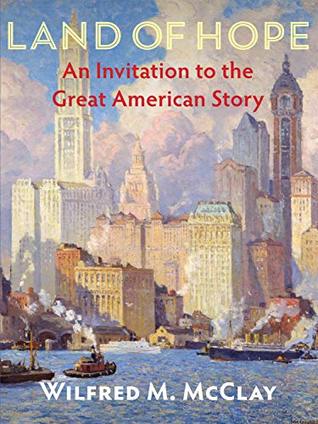More on this book
Community
Kindle Notes & Highlights
Read between
July 8 - July 20, 2019
That said, no other region on earth had such a high proportion of its adult male population enjoying a free status rooted in the private ownership of land. A greater proportion of the American population could participate in elections and have a role in selecting their representatives than anyplace else on the planet. These colonists were acquiring the habit of self-rule, and they were not likely ever to want to give it up easily or willingly.
Behind all these particulars was a powerful idea. Conflict is part of the human condition and can never be eliminated. Neither can the desire for power and the tendency to abuse it. Therefore a workable constitution has to provide a structure within which conflict can be tamed, institutionalized, and thereby made productive, while the search for power can be kept within bounds. Like an internal combustion engine, such a constitution should be designed to redirect the energies released by the explosions that take place within its chambers, using those energies to drive the work of American
...more
It should be designed to work with the grain of human nature, not against it; but in doing so, it should also counteract the worst tendencies of human nature rather than encourage them. For that very reason, it is not conducive to easygoing peaceableness. The only thing all contending parties need to agree on is the authority of the Constitution itself and the rules of engagement it sets forth. So
Beneath it all was a darkly realistic view of human potentialities, reflecting the chastened Calvinist view of human nature that permeated eighteenth-century America and informed the thinking of the Framers themselves, making them suspicious of concentrated power. “Ambition must be made to counteract ambition,” Madison warned, because although a society needed the energy of its ambitious men, the most ambitious men were likely also to be the worst if they became corrupt, and the causes of faction were everywhere “sown into the nature of man.”
For Lincoln, the restoration and preservation of the Union was the chief goal of the war. All other objectives were subordinated to that one. It is important to stress this. It was not until well into the war that the overthrow of slavery became an important part of the Northern agenda. There could be no doubt that the existence of slavery was a central cause of the war; but there also can be no doubt that, as the war began, opposition to slavery was not the central reason why the North embraced a war against secession.
But American workers were historically reluctant to join unions, for many reasons. The strong sense of individualism that prevails in American culture militated against it; so too did a lack of working-class identity among American workers, who tended to see their “hireling” status as temporary and hoped to rise eventually into the middle and upper classes, thus fulfilling the aspiration to be self-made men. Racial and ethnic tensions within the workforce also made unification difficult, particularly as the industrial workforce became more and more dominated by immigrants, whose cultural
...more
Perhaps that is because America, as historian Richard Hofstadter quipped, is a nation that “was born in the country and has moved to the city,” while never entirely adapting to the city’s mentality.
The Progressive view of human nature saw humans as fundamentally good, and evil as a function of bad social systems and corrupted institutions, not something irremediably wrong or sinful deep in the souls of individual persons. There was no inherent limit to the improvability of the world. No problem was beyond solution.
The problems of the day would never, they thought, be corrected by a Madisonian system of raw competition, in which (as Madison said) ambition would be made to counteract ambition and interests to counter interests. Instead, they would be corrected through the exercise of scientific intelligence applied by disinterested experts. Hence the Progressive emphasis on the transformation and renewal of social and political institutions as the key to the renewal of the world. Hence the responsibility of government, acting as the “social intelligence” of an informed public, to order the community in a
...more
before you tear down a fence, be sure you first fully understand the use that the fence was erected to serve.
Never again would it be able to return to anything like the remote and decentralized bucolic agrarian empire it once was; never again would isolation from the world be possible, let alone desirable. Nor could it ever again look to Europe in the way that a child looks to its parent. All that was changed. The mantle of world leadership had passed to it now, indeed had been thrust upon it, in a way it could no longer refuse. That mantle came to the United States not only because of its preeminent military and economic power but because of the generous way it had employed that power in the world’s
...more
“What Is a Nation?,” a nation should be understood as “a soul, a spiritual principle,” constituted not only by present-day consent but also by the dynamic residuum of the past, “the possession in common of a rich legacy of memories” which form in the citizen “the will to perpetuate the value of the heritage that one has received in an undivided form.”
In this view, shared memories, and the passing along of them, are what form the core of a national consciousness. They are what make us an “us.”


